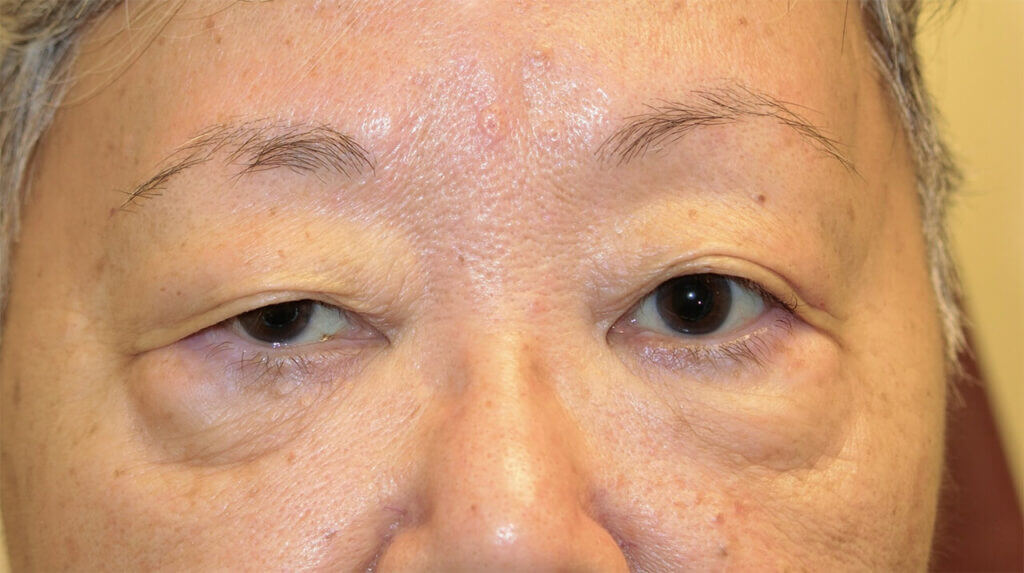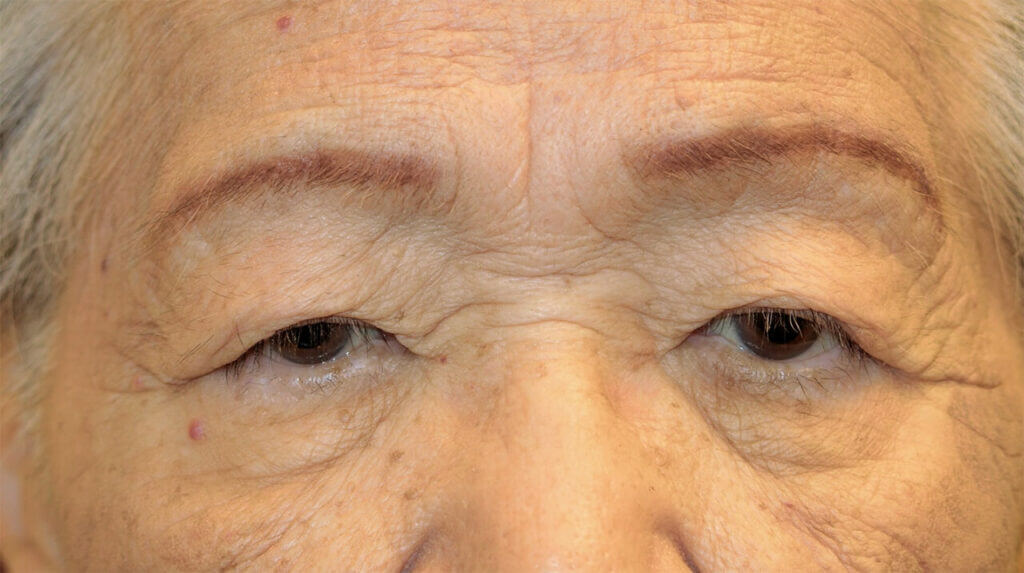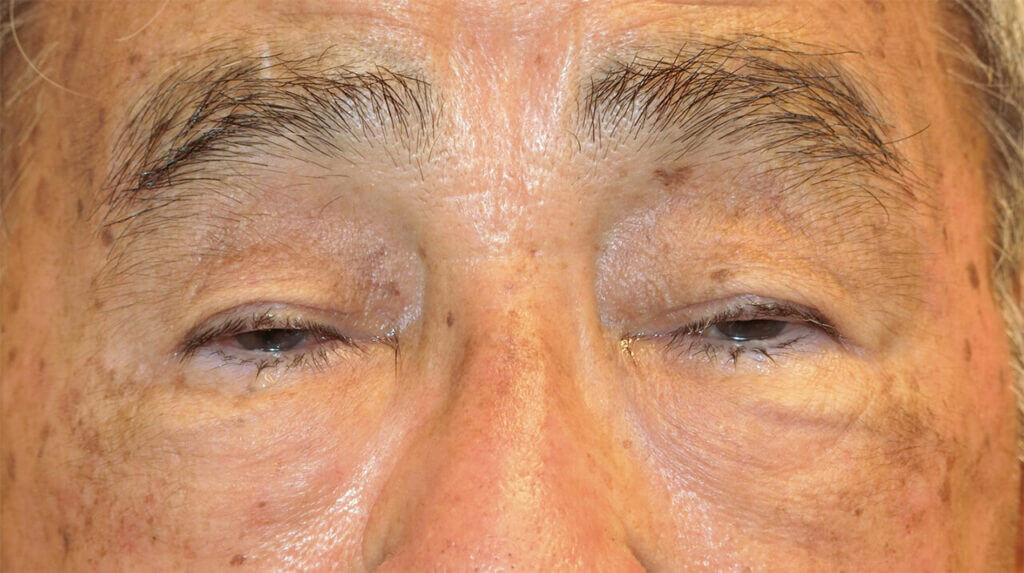Droopy Eyelids
Droopy Upper Eyelids
The Problem:
- Over time droopy eyelids
- People tell you that you look sleepy
- You feel more tired in the evenings
- You suffer from neck stiffness
- Difficulty seeing peripherally
- Eyelid irritation
How this affects you:
- Difficulty reading
- Difficulty driving
- Unable to comfortably complete your normal daily tasks (e.g. work, house work, etc.)
- Photos often look less complementary
What is happening?
Over time, eyelid skin becomes less elastic and begins to sag. When it starts to cross over your pupil, it can affect vision.
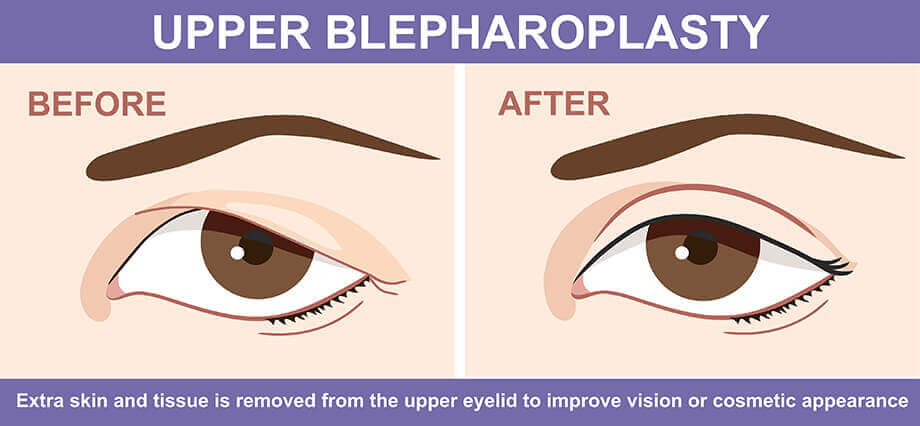
What can be done about it?
Options:
- Observation – some people choose to wait until the problem becomes intolerable/disabling
- Fillers – These are not indicated in these cases
- Medications – There is one recently released product on the market – Upneeq
- It works on treating only those with ptosis caused by muscle issues
- It is a daily eyedrop used once a day and must be used for life, or until the muscle drooping worsens, requiring surgery.
- It is not covered by insurance.
Surgery
Indicated if the problem has begun to affect your lifestyle or becomes a safety issue in doing the things you want to do
Upper Eyelid Blepharoplasty
Upper Eyelid Blepharoplasty is a procedure performed on the skin and underlying fat of the eyelids.
- The eyelids are measured for the proposed shape and the amount of skin to be removed.
- Local anesthesia is given along with IV anesthesia to make the procedure as relaxing as possible.
- An incision is made along the marked areas, removing the excess skin
- Excess fat is also removed
- The eyelid crease is formed and the skin is closed with sutures.
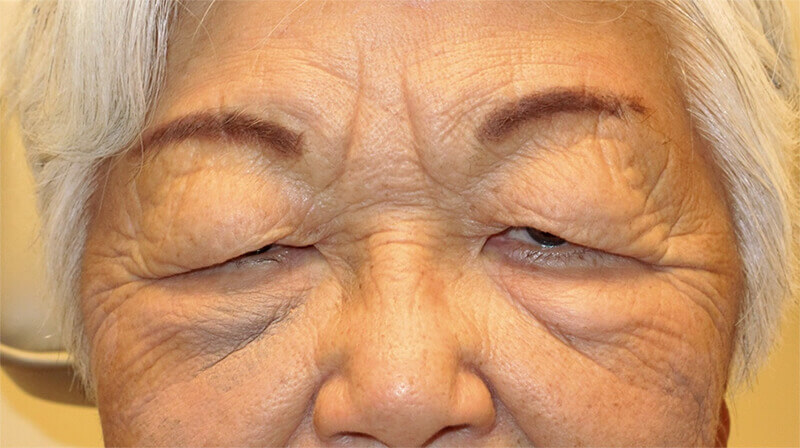
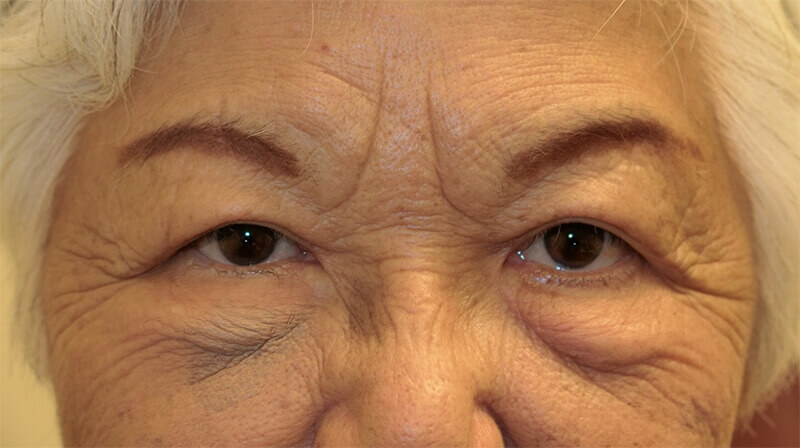
Ptosis Surgery
Ptosis surgery is a procedure performed on the levator muscle – the muscle that elevates the eyelid.
- The eyelids are marked for location of the incision. This incision will become the location of the eyelid crease.
- Local anesthesia is given along with IV anesthesia to make the procedure as relaxing as possible.
- An incision is made along the marked areas and the levator muscle is identified.
- Sutures are used to tighten the levator muscle and allow it to lift up the eyelid.
- The height of the eyelids is adjusted to be as close to the same level as possible.
- The eyelid crease is formed and the skin is closed with sutures.
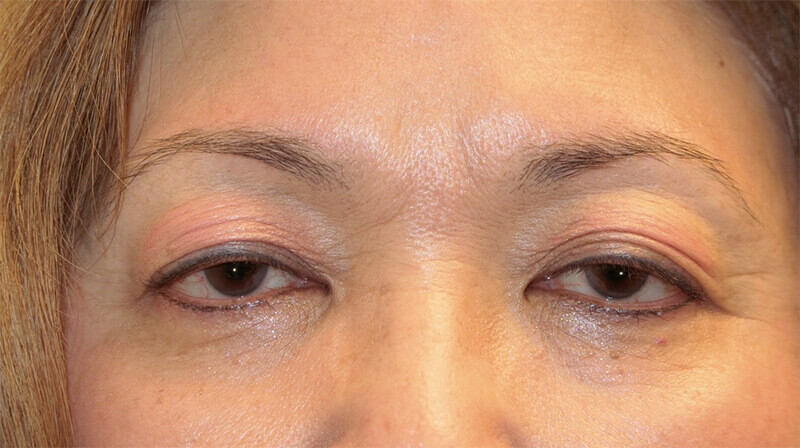
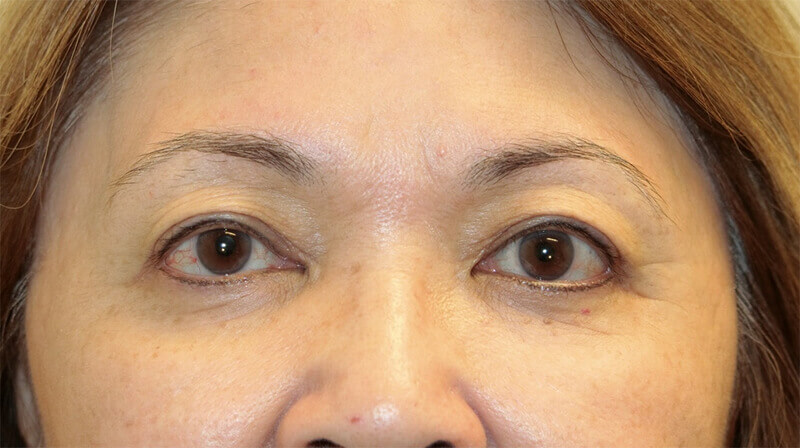
Baggy Lower Eyelids
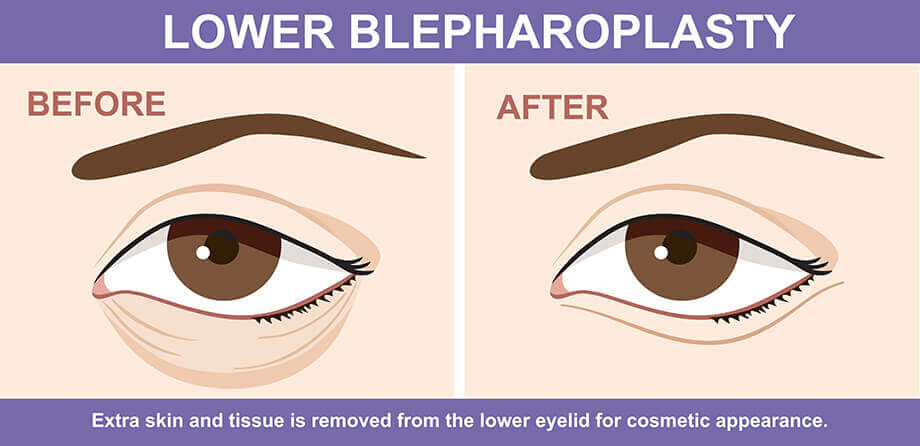
The Problem:
- Over time droopy eyelids with baggy formation
- People tell you that you look tired
- Eyelid irritation can occur
How this affects you:
- Tired appearance
- Photos often look less complementary
What is happening?
Over time, a wall separating the fat pocket from the eyelid skin begins to thin. This results in the fat bulging forward and pushing the lower eyelid outwards.
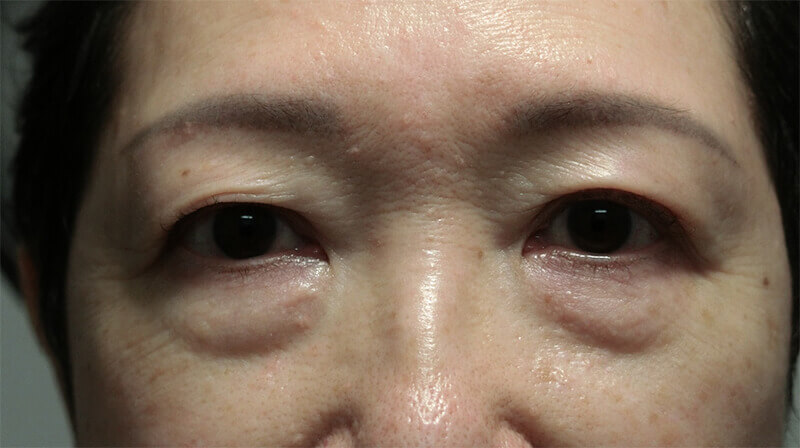
What can be done about it?
Options:
- Observation – some people choose to wait until the problem becomes intolerable
- Fillers – These can help with filling in the troughs that sometimes occur under the bulging fat
- Surgery – indicated if the problem has begun to affect your lifestyle
Lower Eyelid Blepharoplasty
Lower Eyelid Blepharoplasty is a procedure primarily aimed at removing the underlying fat of the eyelids.
- The eyelids are marked with the excess fat pads marked.
- Local anesthesia is given along with IV anesthesia to make the procedure as relaxing as possible.
- An incision is made under the eyelash line
- Excess fat is exposed and the excess is removed
- The eyelid skin is closed with sutures.
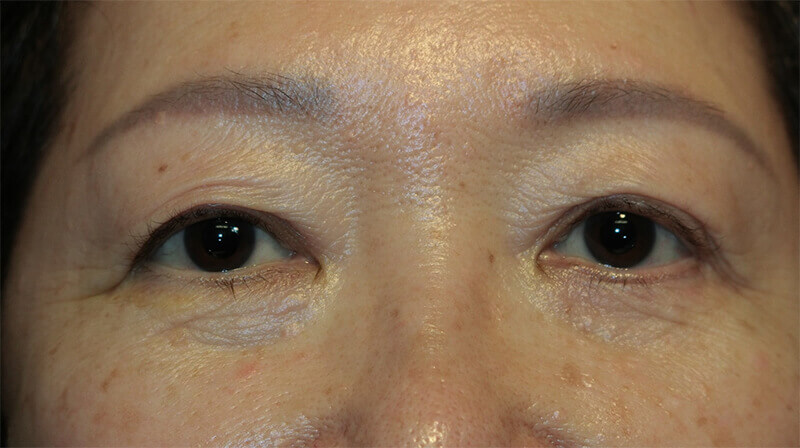
How long does the surgery take?
Generally the entire visit to the surgical center will take around 3 hours. This includes:
- Pre-op check-in
- Nurse and anesthesia interview
- Transport to the operating room with prepping and draping
- Procedure
- Transport back to recovery with post-op instructions.
The actual procedure time takes 45 minutes to an hour for either upper blepharoplasty, ptosis repair or both procedures. For lower eyelid blepharoplasty, the procedure takes 45 minutes. Total time for both upper and lower eyelid surgery is around one and half hours.
How long is recovery?
For recovery, you can expect to be bruised and swollen. Ice packs will be provided and instructions for use will be given. The best part about eyelid surgery is that there should be very little pain following the procedure. The reason why is that the pain sensation nerves are cut during the surgery. They take around 2 months to regrow and by that time, the skin has long healed. Here you can download postoperative eyelid instructions
Timeline to recovery:
- Bleeding from wound – 2-3 days
- Sutures removed – 7 days
- Bruising of skin – 10-14 days
- Swelling resolved – 1 to 4 months
- Eyelids should look much better by one month
Is this procedure covered by insurance?
Insurance will cover upper eyelid blepharoplasty and ptosis if there is a medical indication that can be demonstrated. In this case, further testing will need to be performed with approval from the insurance company following submission of the results. If no medical indication is provided then the procedure is considered cosmetic and the patient will be responsible for payment.
Lower eyelid surgery is not covered by insurance and is considered cosmetic

